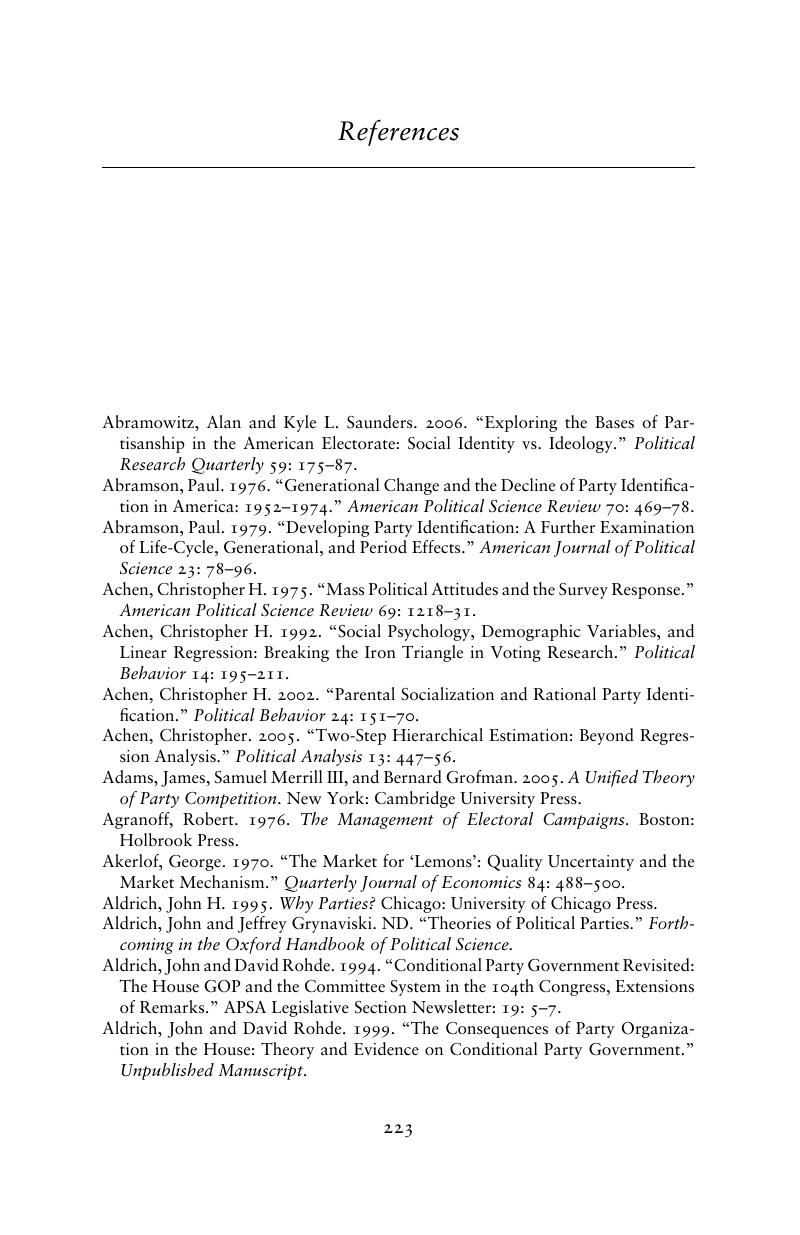Book contents
References
Published online by Cambridge University Press: 05 May 2010
Summary

- Type
- Chapter
- Information
- Partisan BondsPolitical Reputations and Legislative Accountability, pp. 223 - 236Publisher: Cambridge University PressPrint publication year: 2010

